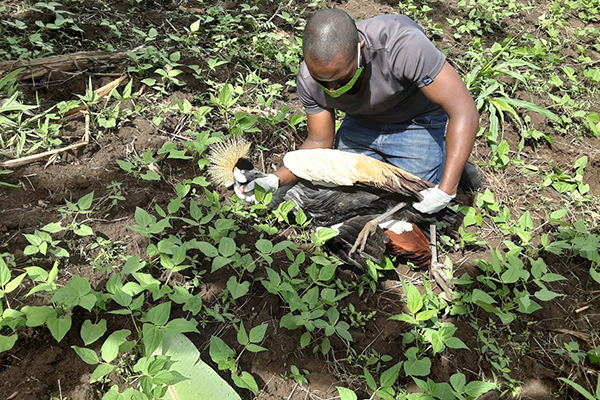
In March and April 2021, several crane poisoning and persecution incidents using snares have been reported in southcentral Uganda. The incidents are thought to be driven by crop damage caused by the cranes when they visit agricultural fields. These incidents have coincided with the onset of seasonal rains, which is planting season for most crops.
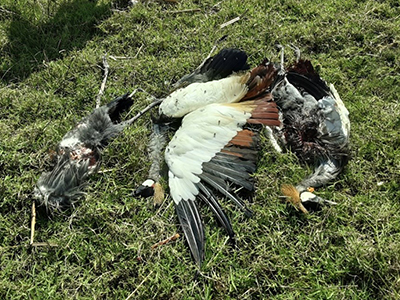
Carcasses of the poisoned cranes pose a threat to human health and other animals, both wild and domestic. Whereas the poisoning occurs on crop fields, the cranes fly away and die at a distance, mainly in or around water sources, as they search for water to counteract the effect of poisons. The cranes’ movements pose a health risk because the carcasses might contaminate the water source on which communities depend. We have also received reports of dogs and wild animals eating the carcasses of poisoned cranes, which also puts their lives in danger.
As a mitigation measure, our project has empowered Crane Custodians, local community members who have volunteered to safeguard cranes, to educate communities about the dangers of misusing agrochemicals, which are readily available in local markets and can easily be purchased and used to kill cranes. Our project staff members are also conducting community awareness campaigns against this vice.
The Crane Custodians further work to create awareness and teach their community members about the importance of crane and wetland conservation, including how to live in harmony and tolerate cranes on their farmlands. The custodians have been able to monitor and report incidents, such as crane poisonings and other injuries. The dedicated volunteers also report and monitor cranes that are breeding, which is contributing to enhanced breeding of cranes within their communities.
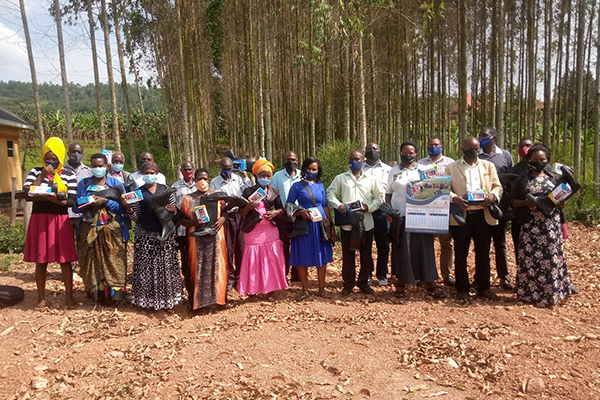
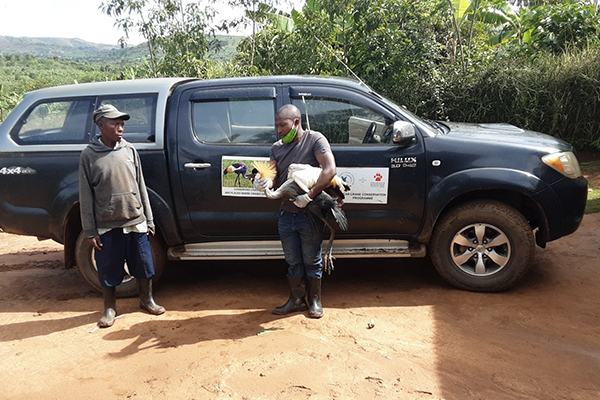
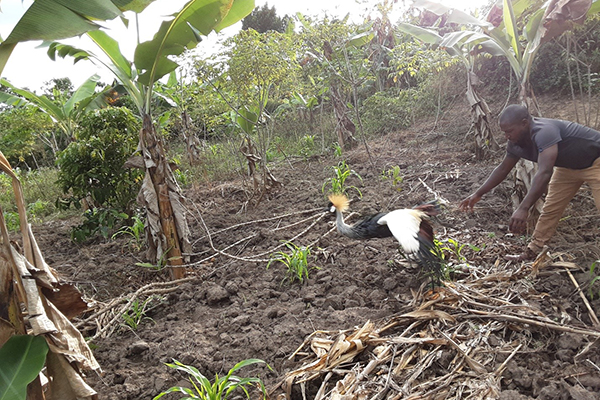
 Story submitted by Gilbert Tayebwa, Southcentral Uganda Field Officer. Click here to learn more about our work in Sub-Saharan Africa.
Story submitted by Gilbert Tayebwa, Southcentral Uganda Field Officer. Click here to learn more about our work in Sub-Saharan Africa.
